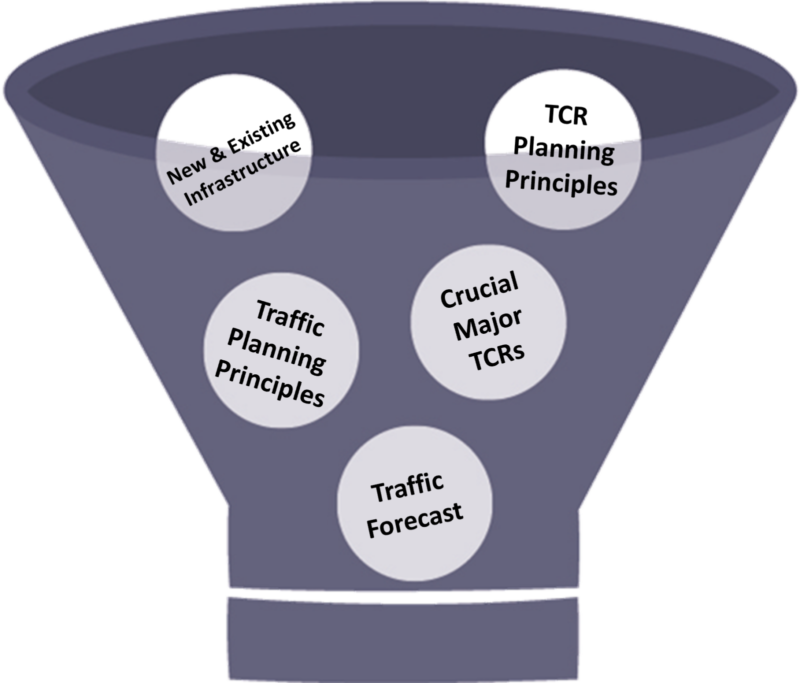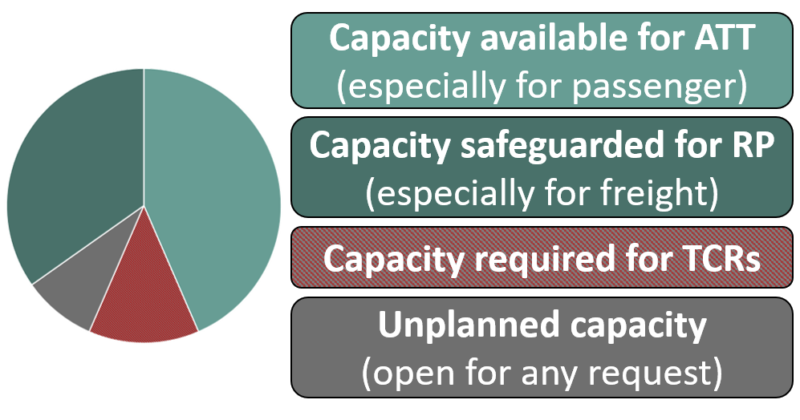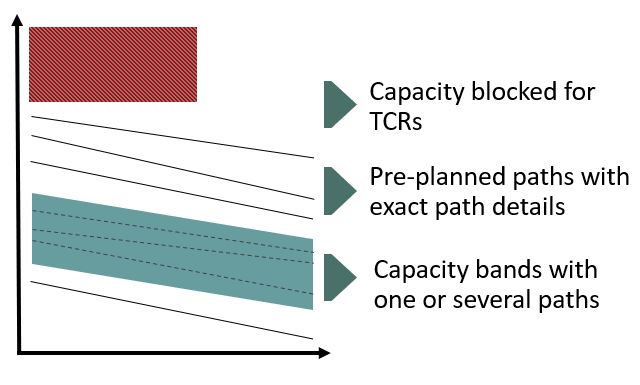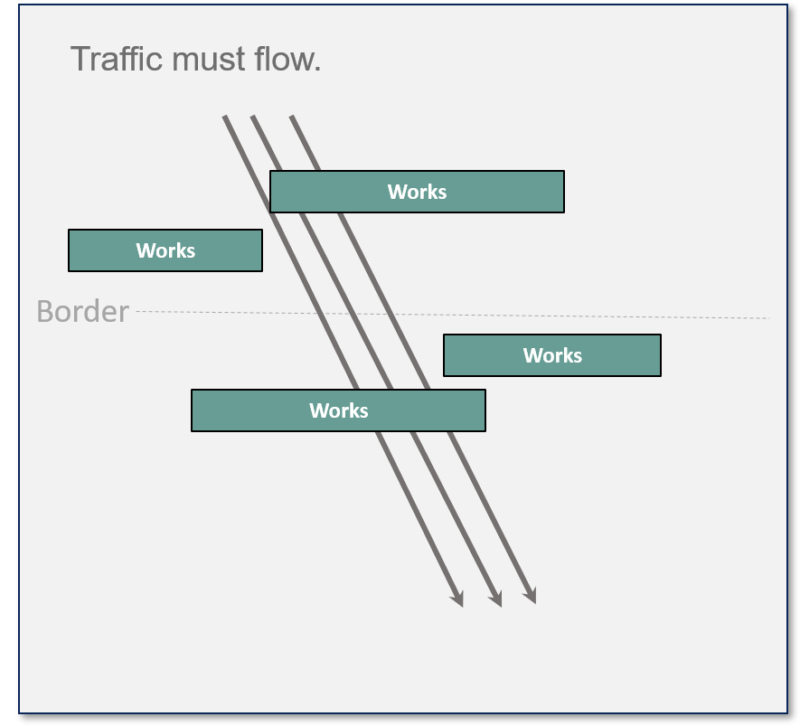Capacity Strategy
The Capacity Strategy represents the basis for more precise capacity planning. It should provide insights into the IMs’ and Applicants’ intentions for upcoming timetable periods, including the management of traffic streams, newly available infrastructure and TCRs with massive impact on European main lines.
The creation of the Capacity Strategy starts five years before the timetable change and allows all stakeholders to announce and pre-coordinate these influencing factors at an early planning stage. Items influencing the Strategy should be communicated in the level of detail needed for a basic plan. Despite the comparatively low level of detail available at this early stage, it is necessary to share such information at European level to provide a transparent view on the main aspects influencing the future capacity situation.

Capacity Model with Capacity Partitioning
The key characteristic of the redesigned timetabling process lies in the consolidation of all known capacity elements (available capacity, expected traffic volume, etc.) into a single entity: the Capacity Model.
A Capacity Model is a visualisation of
- Capacity needed for passenger traffic
- Capacity needed for freight traffic
- Capacity blocked by TCRs
The Capacity Model is used to transparently communicate and discuss in more detail the expected volumes (not path or TCR details) and detect pressure points. In the case of lines with international relevance, harmonisation with all involved IMs is obligatory. Findings from the Capacity Strategy will be included, and applicants will be asked to provide Capacity Needs Announcements.
The Capacity Model is created starting three years before the timetable change under the lead of the IMs and for each international line individually to reflect the local needs and particularities. In the final Capacity Model at X-18, the available capacity is partitioned according to market needs (at least containing the maximum share of capacity for TCRs and the minimum capacity safeguarded for Rolling Planning requests (or ad hoc where applicable)). On lines where capacity is scarce, a more detailed partitioning, for instance according to market segments, might be needed.

Capacity Planning with Capacity Supply
The capacity partitioning (final version of the model) is the basis for the construction of the Capacity Supply. Work on the internationally harmonised Capacity Supply starts at X-18. In a 365-day overview capacity diagram, objects such as pre-planned paths and or wider bandwidths with the number of available slots are displayed. IMs should start harmonisation of the international Capacity Supply as early as possible and at the latest by X-13.5 by actively approach neighbouring IMs with their Capacity Supply proposals to coordinate products and their publication. For days when traffic will be affected by TCRs, IMs should jointly prepare sufficient and harmonised Capacity Supply on diversionary lines. Alignment of the TCR windows is also part of this harmonisation.
Using this method, it is possible for IMs to coordinate their efforts well in advance, share and discuss information on capacity bottlenecks with applicants long before the start of capacity requests and accelerate the creation of timetables after the request phase. This approach will help to reduce load peaks for all involved stakeholders and increase the efficiency of the entire process.

Temporary Capacity Restrictions (TCRs)
The proper coordination and communication of Temporary Capacity Restrictions (TCRs) is key in the provision of reliable capacity information. Without stable and well planned TCRs, high quality train paths cannot be created. Although works are important for keeping the infrastructure in good shape, insufficient coordination of works leads to wasted capacity and traffic delays. The commercial needs of IMs and Applicants must be considered throughout the entire coordination process.

Based on the TTR project results, the European Commission has recast its legal framework to differentiate between three impact types of TCRs:
- TCRs with major impact on traffic (to be coordinated by 18 months prior to the timetable change)
- TCRs with high and medium impact on traffic, (to be coordinated by 12 months prior to the timetable change)
- TCRs with minor impact on traffic (to be coordinated by 4 months prior to the timetable change).

More information can be found here.
A detailed description of the individual steps within the TTR process is available here.